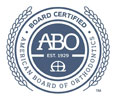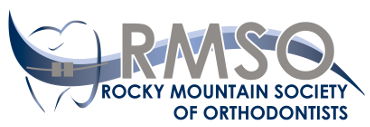Frequently Asked Questions
Patients' FAQs (Frequently Asked Questions)
What are the indications that my child is due for an orthodontic treatment?
It is usually difficult for you to determine if treatment is necessary because there are many problems that can occur even though the front teeth look straight. Also, there are some problems that look intimidating and complex which will resolve on their own. Asking your general dentist is good reference, but we are your best resource since orthodontics is all we do. Our initial exam is complimentary and we would be more than happy to see your child and make any recommendations necessary.
What is the recommended age for my child to be seen by an orthodontist?
The AAO (American Association of Orthodontists) recommends age 6 as the appropriate age for your child to be examined. This early examination if necessary in order to detect any impending issue and correct it. The early correction helps prevent a costlier and more complex treatment in future.
What are the early signs of orthodontic disorders?
You may not be able to know the type of conditions that require treatment, but the following signs should be enough indication that it is time to visit us for an orthodontic examination.
- Examine the teeth of your child and check if there are signs of teeth overlap, teeth gaps, crooked teeth, etc. Arrange to see us if these signs are noticed.
- Instruct your child to bite down completely while leaving their lips open. This way, you can see and examine their teeth. Check if the upper front teeth align with the lower front teeth. Check if the upper teeth are behind the lower teeth. Check to see whether the upper teeth projects away from the lower teeth. Finally, check if the upper front teeth cover more than half of the lower teeth. If the answer to any of these checks is positive, it is time to seek an orthodontic evaluation for possible treatment.
- Inspect your child's jaw for alignment. As he bites down, check if the jaw shifts to an off center position.
These are only some of the obvious symptoms of orthodontic problems.
Can you be too old for braces?
There is no age limit. The only factor considered is the health of the bone and gums that anchor your teeth. As long as these are still strong, you are a good candidate for braces. Approximately half of our orthodontic patients are adults and the number keeps increasing.
Is the treatment painful?
Modern technology and processes have significantly improved orthodontic treatment. We make use of premium grade orthodontic materials and compact braces in order to minimize discomfort and improve treatment time. Braces that are available today are more portable and comfortable than what was used years back. Although it is normal to have sore teeth for some days after brace application, it is not painful. However, this soreness can be alleviated with an over-the-counter painkiller.
Can I use braces even if I have missing teeth?
Yes. This is recommended because when you have missing teeth, nearby teeth will naturally wander into the gap left by the missing teeth. Several problems can arise from this occurrence - aesthetic, functional, or periodontal problems. These problems can be corrected and prevented by using appropriate orthodontic procedures to achieve proper alignment. Proper alignment is vital to the dentist who will replace the missing teeth.
Questions About The Treatment
What is Phase I (interceptive treatment) and Phase II treatment?
Interceptive orthodontic treatment (Phase I) is initiated at about the age of seven, when the child still has a greater number of milk teeth present, with few of the permanent incisors. The ultimate aim of the Phase I treatment is to checkmate or intercept a mild or extreme case of orthodontic disorder early in the child's life, in order to minimize or eradicate it. Some of these disorders include spacing, crowding, skeletal dysplasia, crossbites etc. The benefits of Phase I treatment hinge on the fact that this is the period in a child's life when the dental structure is still forming and is pliable to be worked on. This makes the procedure very easy to handle and minimizes the need for tooth extraction or surgical interventions. It also offers more long-lasting results and treatment alternatives. Most Phase I patients will go on to have a Phase II treatment so that they can have a proper bite.
Phase II treatment is usually done around the ages of 12 and 13, after the eruption of additional 12 to 16 permanent teeth. The aim of Phase II treatment is to ensure a proper meeting of the upper and lower permanent teeth (occlusion), either when chewing or at rest.
What is the meaning of total or comprehensive orthodontic treatment?
This is the type of orthodontic treatment carried out on permanent teeth. It is done for patients of any age and usually arises when Phase I treatment was not done.
Is Phase I treatment mandatory for everyone?
Of course not. Not all bites need early treatments. There are some conditions that would require a patient to wait until the permanent teeth start coming out before treatment is given.
Can I suspend interceptive orthodontic treatment until my child gets older?
We do not recommend this approach. If your child has been diagnosed with a condition that requires Phase I treatment, it simply means that the condition must be attended to immediately in order to prevent costlier, more difficult, and limited treatment alternatives later in life.
How long does an orthodontic treatment last?
This depends a lot on the patient's age, the seriousness of the condition, the allowable movement, and the patient's ability to adhere to set rules. Generally, wearing of braces lasts from 6 to 30 months.
What is the meaning of extraction and non-extraction therapy, and what are the pros and cons of each?
Extraction therapy is a method used to remove some of a child's teeth in order to create space for other teeth in the mouth. Whereas with non-extraction therapy, no teeth are removed, rather the child's jaw is expanded and some teeth sizes reduced so that everything will fit perfectly.
Other Frequently Asked Questions
What are the different types of braces?
Generally, braces are constructed from two major materials - titanium alloy and artificial clear materials. The titanium alloy version has brackets that are smooth and small, with colored rings holding the brace wires in place. These colored rings are changed at every visit. We also have our own clear braces, which are constructed with the same artificial sapphire crystals used in expensive luxurious watches. These braces are rugged and as transparent as glass. They reflect the color of the teeth, thereby appearing almost invisible to the eye.
Despite the peculiarities of the two types of braces, their designs are dependent on the unique needs of the patient. Our braces are manufactured solely for each patient and with specific details and measurements suitable for the particular patient.
Both types of brackets are specifically designed according to the needs of each patient. Just as different medications have different uses, our brackets have a specific prescription of angles and forces which are chosen for each individual patient.
What are lingual braces?
Lingual braces are the type of braces mounted at the back of a patient's teeth. The main benefit is the ability to stay hidden in the mouth. Despite this advantage, it is froth with many challenges. It costs more than standard braces and takes twice the time for orthodontic treatment. Lingual braces limit speech ability of some patients and the finishing is not as detailed and fine as standard braces. Though they used to be popular years back, they are only available in Europe these days and currently used only in special clinical situations.
Is orthodontic care costly?
The cost of an orthodontic treatment rises when a proper dental care routine is not maintained. As long as you have a regular dental care schedule that detects problems at the budding stage, orthodontic care will always remain affordable. When compared to other consumer goods, orthodontic fees have remained stable. Usually, there are financing options you can explore and we have many different structured payment plans that meet the need of our patients. Insurance policies also have orthodontic care provisions these days.




